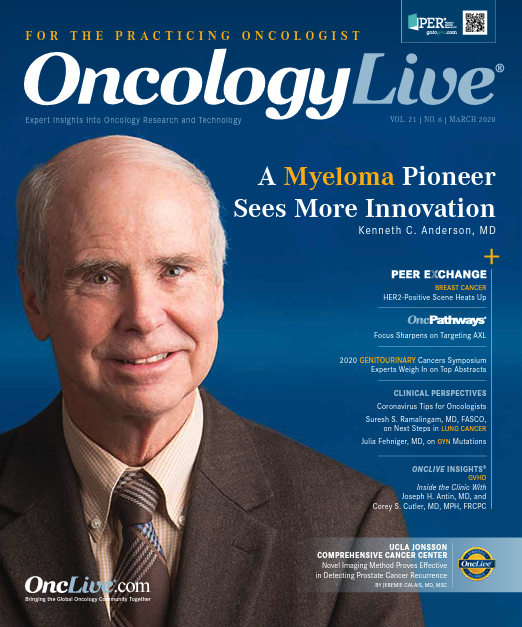Publication
Article
Moving to Electronic Prior Authorization Requires Incremental Steps
Author(s):
In a time of tremendous technological advancement, how is it that 90% of communications between providers and payers for prior authorizations are still done by phone or fax, and how do we move to more automated processes?1
Diana Verrilli, MS

Diana Verrilli, MS
Those of us who work in oncology are constantly amazed by the progress being made in the fight against cancer. The miracles of modern medicine are on display every day as patients with cancer receive novel treatments, such as promising new immunotherapies or the very latest radiation treatments. Consequently, it seems a bit ironic that practices administering these cutting-edge therapies often rely on a dinosaur technology― the fax machine―to obtain prior authorization for treatment. In a time of tremendous technological advancement, how is it that 90% of communications between providers and payers for prior authorizations are still done by phone or fax, and how do we move to more automated processes?1
Faxing Negatively Affects Healthcare Processes
The ramifications of being tethered to the fax machine for prior authorizations are far reaching, affecting both quality of care and costs. In oncology, the biggest concern is the delay in time to treatment and the impact to the patient, causing unnecessary stress and anxiety. Certain types of cancer are extremely aggressive, and even a week’s delay can be detrimental. Faxing and other asynchronous communications as well as the overall process to seek approval for needed services can slow down prior authorization and reduce the ability to follow up in efficient, intelligent ways.
Faxing also drives up costs. According to the nonprofit Council for Affordable Quality Healthcare, both payers and providers would profit from fully electronic prior authorizations. Payers could save at least $3.64 per transaction, while providers could save more than $3.20 on each request. With the average provider submitting roughly 50 to 60 prior authorizations a day, the savings would be substantial.1
Why Is the Fax Machine Still Around?
Although most industries left the fax machine behind in the 1990s, it’s still a fixture in healthcare. It has become a standard, with systems and procedures built around it in virtually every medical facility across the country. Shifting away from an established communication standard that has existed for decades is challenging. A standard makes it easier for people to follow a common process, but it also makes it harder to transition to other options. For instance, in healthcare, there are many factors that inhibit the move away from fax, such as:
HIPAA concerns
Some interpret the wording of Health Insurance Portability and Accountability Act (HIPAA) to mean that fax is an acceptably secure medium, whereas email or digital communications are not. In reality, the risk of exposing a patient’s protected health information to someone who should not see it can be greater with fax than email and other digital technologies. Faxing to a phone number sends documents to one location, but many unintended recipients could be at that site. Misdialing is also a problem, sending the fax where it should not go at all. It seems a little ironic that faxing is perceived by some to be more secure than an email address, which at least has the advantage of targeting 1 individual. Obviously, cybersecurity is a concern with email and other digital technologies, but there are many digitally secure methods for transmitting protected health information, such as patient portals and other secure communication platforms.
Faxing is simpler
Oncology (and medicine in general) is in a state of transition right now where some payers require faxing for prior authorizations, some have portals, and others utilize third parties with their own requirements for receiving documentation. Practices are burdened with a wide range of complex methods and processes that vary from payer to payer. Managing every case differently and inputting information into different systems are much more complicated and riskier than just faxing documents. Because oncology therapies are quite costly, practices and payers do not want to leave anything to chance. If given a choice, many will fax, even if it takes much longer. Faxing is a standard they know and trust, providing a certain level of comfort and documentation that the prior authorization request was received and processed.
Interoperability challenges
Interoperability remains an obstacle to data sharing throughout healthcare. Difficulties communicating important sensitive information from 1 computer system to another are still common, forcing reliance on the fax. Different languages exist across the various health systems that can alter the context of information and quickly create the inability to make sense of the shared data. Interoperability is still a long journey that will require collaboration across competing businesses, nonprofits, information exchanges, and federal regulators.2
Oncology Poses Unique Barriers
There is nothing unique about oncology that makes it more challenging to move away from fax than other areas of medicine. In fact, there is a higher incentive to switch to real-time communications and real-time feedback regarding the status of the request (eg, approved, denied, pending). Further, clinical criteria regarding prior authorization clinical protocols should be more transparent to providers; processes to facilitate efficiency and faster response times are essential. All patients deserve access to needed care, and prior authorization should never be a barrier to the delivery of appropriate, evidence-based medicine.
The burden of phone calls and faxing is greater in oncology than other branches of medicine because providers must furnish an in-depth level of clinical information to support the appropriate use of costly therapies. The barriers to change can also be higher because both practices and payers have a substantial investment built around existing prior authorization systems. Both care greatly about making sure documentation for these high-cost therapies is handled appropriately, so there are many processes in place around the old standards.
Government Can Help Drive the Change
The government can play a key role in moving medicine away from outdated modes of communication by helping to establish electronic communication standards that are HIPAA compliant, technically feasible, and acceptable to all stakeholders. The proposed Secure Electronic Prior Authorization (SEPA) rule is a huge step in the right direction. It begins the process of creating a common language so payers and providers can efficiently communicate without having to create their own language.
Other legislation has advanced basic standards addressing health information interoperability, but the SEPA rule is a more targeted proposal that would create something tactical that companies could begin to engineer around for product development. Although SEPA would be a good start if passed, some parties will invariably be unhappy with it. If this occurs, we need to ask ourselves if the rule is better than what we have today and if it is a step in the right direction. If the answer is yes, stakeholders should enthusiastically rally around it. Waiting for a single policy or standard that is going to work for everyone will get us nowhere.
Collaboration and Compromise Are Essential
Adopting similar standards and shared frameworks is something all healthcare stakeholders must do to accomplish the move to more digital communications. We must all participate in the creation of standards and follow them once they emerge. At McKesson, we have made great progress toward electronic prior authorizations in some of our oncology- specific technologies, such as Clear Value Plus. This regimen support tool greatly reduces the burden of prior authorization by implementing Fast Health Interoperability Resources (FHIR) standards, enabling payers and providers to electronically communicate detailed clinical information and patient demographic data. The FHIR standards are a good start on the road to exchanging healthcare information electronically, and hopefully other technology developers are embracing this next-generation standards framework.
Unfortunately, a number of payers have produced their own proprietary solutions, each following a slightly different path in which clinical systems adhere to somewhat different terminology. One standard approach is essential. Obviously, we are all going to have to compromise and adjust along the way to develop standards, but once we do, all stakeholders― especially patients―will benefit.
New Payer Policies Are Required
Even if the FHIR standards and SEPA rule are successful in establishing some basic standards for interoperability, that is only half the battle in overcoming prior authorization challenges. Payers must embrace new payment policies and transparency, along with technology interfaces, to enable seamless, automated prior authorizations that support quality care. Adopting the following policy recommendations would help drive a timely, efficient process:
72-hour review for approval/denial
Unfortunately, some payers take as long as 2 weeks to respond, delaying treatment and heightening the anxiety patients already have about their cancer diagnosis.
Meaningful peer-to-peer review with a medical oncologist or relevant specialist
Oncologists often end up discussing treatment recommendations with physicians who do not specialize in oncology, such as a primary care physician or sometimes even an obstetrician. Requirements for peer-to-peer discussion delay needed therapies unnecessarily, but if the situation demands this, then the reviewer should know the field well.
Publicly posting the percentage of authorization decisions and coverage requirements
Physicians need transparency around the clinical protocols and requirements for authorizations. Posting this information would provide clarity and create a more efficient process.
One-year approval for long-term therapy
Many patients with cancer have a treatment protocol that may extend over a longer period of time (according to evidence-based oncology guidelines), so requiring prior authorizations every few months when the therapy will not be changing for a prolonged period of time is a waste of both provider and payer resources.
By using these suggestions to build a framework for prior approvals, payers and technology vendors can automate the prior authorization process so providers can receive an automatic response if established criteria are met. Transparency that enables an understanding of the rules and an automated process are both required to overcome the prior authorization challenges that are seriously inhibiting physicians’ ability to deliver timely, high-quality care.
A Change In Mindset Is Needed
In working with both payers and providers over the years, 1 truth has emerged: Finding a solution that is ideal for all stakeholders is very difficult, if not impossible. Consequently, in modernizing healthcare communications, we need to consider how we can make progress in stages, rather than looking for the perfect solution. Unfortunately, this is easier said than done. When moving away from long-established standards and overcoming barriers that are decades old, there is no quick fix. We have to adopt the mindset and embrace change; making improvements in incremental steps is a win for patients, providers, and payers.

Latest Conference Coverage
2 Commerce Drive
Cranbury, NJ 08512








